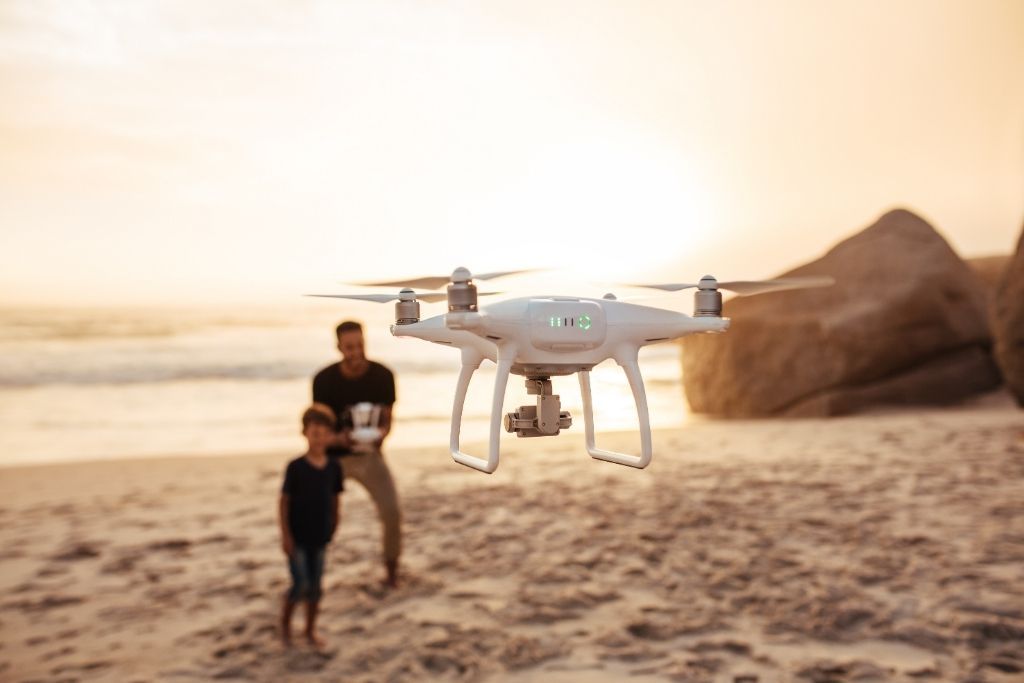Are you considering taking up the extremely fun hobby of flying drones?
If you are, you need to be aware that the learning curve could be very steep depending on the type and model you purchase.
The effort that it takes to master the flying of these swift-moving quadcopters is well worth it because they’ll provide you with hours of riveting entertainment.
Learning to fly a drone is just like mastering any other skill and the secret is, to begin with, the fundamentals.
Yes, you must start at the beginning, because once you get over a certain hump, it’ll be a slippery slide into non-stop excitement.
Since there is a lot to learn and remember, I’ve summed up some of the best tips and tricks for beginners in this article, which makes a great jumping-off point.
Read on to learn more…
1)) FAA Certification
If you're new to flying drones, one of the first steps to take is to become an FAA-certified drone pilot.
This step may not be necessary for you, but some states require it before you fly any kind of recreational or commercial drone.
Check into your specific state's laws to see if you need to get certified.
Even if you don't, certification is still a good idea if you ever plan to make money as a drone pilot.
Another important reason you’d want to get your certification is to learn all about safety, especially when it comes to sharing airspace with other aircraft; such as planes, helicopters, hot air balloons, and even other drones.
The last thing that you want to do is cause an accident that could injure or possibly kill others.
Remember, I’m a strong believer in learning the fundamentals, and I suggest that you develop that same mindset, as this will help to make you a better drone pilot.
That's right; this is a hobby that can pay off.
2)) Start Cheap
When you're just learning, odds are good that you will crash once or twice or perhaps, a dozen times.
Don't feel bad or get discouraged, because it's a part of the learning process.
Learning what not to do when flying is just as important as learning what to do, and you'll never get good if you don't learn, which involves a few crashes.
That's why starting with a cheaper drone is your best bet during your early days as a drone pilot.
The stakes are much lower than if you'd invested hundreds of dollars on a high-end, expensive model.
Mini drones are particularly cheap, fun, and easy to learn.
The moral of the story is, “you may have to crash and burn in order to learn!”
3)) Read The Manual
Now that you've got yourself a starter drone, you might think it's time to rip it out of the packaging and get it into the air.
And you will, soon, but first stop and read the manual, and resist the temptation to wing it.
Some drones have manuals available online, while others still have traditional paper manuals.
Whichever yours is, it's important to give it a thorough read-through to understand your drone's unique controls and features.
This will better prepare you to handle your drone during flight, as well as let you know what kinds of bells and whistles came with your particular model.
In other words, slow down to speed up.
4)) Find A Good Spot
Your backyard may work, but it also may not. To fly your drone, you need a wide-open area that is mostly free from obstacles such as trees.
This will help ensure that you are able to fly without crashing into something.
Ideally, you should be able to maintain visual contact with your drone at all times during the initial few flights, as you learn how the drone responds to your controls.
Warning: Do not fly your drone near airports or any other place where aircraft lands and takes off, I know this should be common sense, but I wanted to give a reminder.
5)) Monitor The Weather
The weather is another important consideration when it comes to flying drones. You don't want too much wind, as it will interfere with your flight.
And rain could damage sensitive electronic parts.
Keep an eye on the radar and watch for any approaching storms, and pick a day when the wind is gentle and not too breezy.
6)) Watch Your Battery Level
Drone flight time has come a long way, but they still are usually only capable of 15-30 minutes of flight time, especially beginner models.
Keep an eye on your drone's battery level and guide it back home when it starts to get low because you want to avoid unnecessary crashes.
7)) Keep Practicing
No matter how bad your first few trials run with your drone go, don't stop practicing. It will get easier over time, and the only way to get better is to keep doing it.
As the old saying goes, practice makes perfect.
Conclusion
I just provided you with seven solid tips that you could begin implementing immediately.
Mastery will happen over time and not overnight, but the more flight hours that you put in, the faster you’ll become proficient.
Don’t forget to invest in a cheaper model when you’re just starting out, because even if you destroy it in a crash, you won’t be out hundreds of dollars.
Besides practice, practice, practice; other ways that you can up your drone-flying game is by joining drone clubs to get advice from veterans and watching instructional videos.
No matter how much you practice, the most important part of learning how to fly a drone is to enjoy the process.
Besides, isn’t the whole point of mastering how to maneuver quadcopters to have fun?
Of course, it is…
So, don’t take the joy out of it by taking the process too seriously.
My advice is to never stop learning about drones and keep at them, and you’ll be an excellent pilot before you know it.
Now, get out there and have some fun!
Download Our Free E-book!







